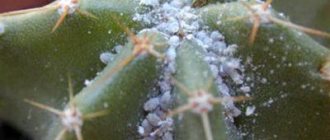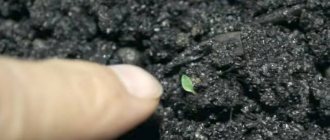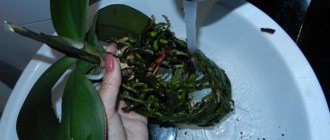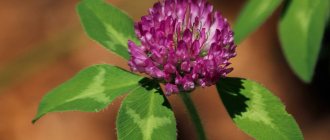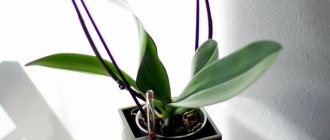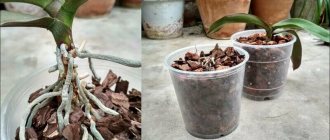When it comes to orchids, amateur detective Nero Wolfe immediately comes to mind. He created all the conditions for his favorite flowers in his home greenhouse. Surely his orchids lived longer than usual - 7-8 years in a pot. But, for sure, they still did not live to see the 60 or even 80 years that they are able to survive in the wild.
Let's start with wild orchids.
At home
If you look at thematic forums, information about the timing of growth at home varies. Some write that the plant died after 3 years, others enjoy the sight for more than 10 years. Life expectancy directly depends on the created growing conditions.
Dependence of the duration of existence on the variety
Variety is one of the important indicators. For example, phalaenopsis can live for about 7-10 years, but dendrobium can live for a maximum of 6 years. If we consider Cattleya, then this variety is unpredictable and its lifespan directly depends on care.
Which species have the shortest life span?
The following types of orchid plants have the shortest lifespan:
- Venus's Shoes;
- Dendrobium and Paphiopedilum 5 years each.
The lady's slipper has the shortest lifespan.
We can also say that the monopodial species lives less, since it has only one growth point, and if it dies, it is very difficult to restore the flower.
Orchids blooming
As you know, orchids bloom quite beautifully. However, sometimes it is difficult to achieve flowering, which is also often associated with the quality of maintenance and care.
Under natural conditions, orchids grow in a fairly aggressive environment, which is caused by a large number of different insects, fungi, and bacteria.
Features in natural conditions
The peculiarity of phalaenopsis is that they do not have a dormant period; they can bloom in the summer, when there is a dry spell outside. During this period of time, plants are pollinated by insects, and flowering persists for a long time. The main natural factor is the temperature difference.
Duration at home
Many gardeners are interested in the question of how long orchids bloom at home. As practice shows, this culture blooms throughout its entire life. The period largely depends on the conditions created and the selected variety.
Season
Orchids grown at home bloom mainly in winter:
- Phalaenopsis - December.
- Cymbidium – blooms from October to February.
- Dendrobium - from October until the very end of winter.
- Oncidium – April-July.
How many times a year
The number and duration of flowering directly depends on the quality of care and the conditions created for growth. If the care is high-quality, then throughout the year the flower can bloom 2 to 3 times. But to achieve this, you need to follow the watering regime, temperature regime, humidity level, and use a substrate for orchids.
What determines the duration of flowering
Each individual flower can bloom for 3 to 4 weeks. The duration largely depends on the level of humidity, temperature, and the condition of the plant. It is not recommended to apply fertilizers and fertilizing during the flowering period.
How many times can an orchid bloom on one peduncle?
The number of blooms depends on the type and variety. For example, in some hybrids it is genetically determined that the peduncle dries out after flowering. In other varieties, it’s the other way around – the young ones almost wake up, giving new shoots.
How to renew
If necessary, the flowering period can be extended. To do this, it is recommended to place the culture in a cool room in which the temperature will vary from +20 to +25 degrees.
Environmental influence
Any plant blooms in several cases:
- Favorable growing conditions have been created.
- The culture is on the verge of death and produces seeds to preserve its species.
In addition, flowering will not occur if you place the flower in a dark place - the sun is required.
Can the baby bloom?
In the event that the baby remained on the peduncle and was not removed, then it is likely that after 4 leaves appear it will bloom. In this case, nutrition is provided by the mother bush, which will not bloom on its own.
How to extend the life of a flower?
The lifespan of a houseplant directly depends on the conditions of its maintenance. It is necessary to separate the concepts of flowering period and lifespan. The flowering period refers to the period of appearance and wilting of plant inflorescences. It can last up to six months, but most often it is limited to 2–3 months.
The flowering process is cyclical and looks like this:
- the orchid shoots an arrow;
- a flower forms on the arrow;
- after a while the bud falls off.
Lifespan is the total lifespan of a plant. It has nothing to do with the flowering period, because an orchid blooms many times over the years of its life. After it flowers, it goes into a dormant state, but does not die.
Peculiarity! It happens that a flower stops blooming for some reason, but lives for a long time.
In order for an orchid to live for the maximum number of years, it needs to create comfortable conditions. Each plant requires an individual approach, because the features of care vary depending on the variety.
Suitable lighting
Orchids, especially those related to epiphytes, need light. But these plants cannot tolerate direct sunlight, because in their natural habitat the light comes to them through the crowns of trees.
If the flower is on the windowsill, then it should be shaded, especially in late spring and summer. In the winter-autumn season, when daylight hours are much shorter, you need to illuminate the plant with special lamps. The dark green color of the leaves is a sign of a lack of lighting, and yellow or brown spots on the leaf blade indicate an excess of it.
What humidity should I maintain?
In tropical climates, atmospheric humidity reaches 100%. In a city apartment, especially during the heating season, the air becomes too dry for orchid plants, which thrive at a humidity of 40–60%.
You can increase the humidity of the room in the following ways:
- use a humidifier;
- place an aquarium or fountain next to the pot;
- irrigate the space near the plant;
- hang a wet cloth over the radiator;
- place the flowerpot with a flower in a tray with wet filler, for example, expanded clay.
Room temperature
Most orchid plants thrive at temperatures between 18 and 25°C (during the summer season). In winter, they are comfortable at temperatures from 15 to 18 °C. Average daily temperature changes should not exceed 3–5 °C.
Important! Under the influence of high temperatures, flowers slow down their growth rate, and in critical situations stop growing altogether. If the choice is between a warm, dark place and a cool, but light place, then it is better to choose the second, reducing the intensity of watering.
How and with what to fertilize the plant?
You can fertilize orchids using the root or foliar method. Liquid products are best suited for feeding, as they maintain the required balance of essential substances. Fertilizers must contain iron and calcium.
In addition, the flower needs the following substances:
- nitrogen;
- potassium;
- B vitamins;
- phosphorus;
- glucose;
- succinic acid.
Features of watering
Household orchids should be watered once a week in summer and twice a week in winter. After watering, it is necessary to pour out excess water from the pan. Otherwise, there will be a risk of root shoots rotting.
Important! During flowering, watering is carried out by immersing the pot in a container of water. If there is insufficient watering, the roots of the plant will begin to dry out, which will lead to the death of the plant.
Transfer
Planned replanting with substrate renewal is carried out every 2–3 years. If problems arise with the root system, an emergency transplant may be required. The main thing in this process is careful handling of the roots to avoid damage.
How to trim correctly?
An old plant can be rejuvenated by pruning. To do this, you will need a sharp, disinfected knife and two pots with new substrate.
The procedure is performed as follows:
- The plant is removed from the pot.
- Cut off the top part of the flower.
- Both parts are placed in different pots.
Such an operation, when carried out correctly, leads to the growth of both or one of the parts. In some cases, there is a danger of complete death of the plant. Most often this happens due to the poor quality of the trimmed hybrid.
5/5 — (1 vote)
How many years does a flower live in the wild?
A wild orchid can die only if the climate has changed significantly or the plant on which it lived has died (we talked in detail about where orchids grow in nature and how they are classified in this article). Another cause of death may be illness.
Under natural conditions, the flower lives for a very long time. Average life expectancy is 60 – 80 years. Some plants live up to a hundred years. This is due to the fact that the environment provides the orchid with everything it needs in the right quantity.
How to create optimal conditions?
For a plant to please you for many years, it needs the right conditions: temperature, humidity, watering. You also need to protect it from pests.
Temperature and humidity
Orchids grow in warm regions, so the air temperature in the room should be from 23 to 27 degrees. A higher temperature can lead to overheating of the root system and leaves, a lower temperature can lead to frostbite. They need quite high humidity - about 85 percent.
The influence of proper watering
Watering too infrequently will certainly lead to drying out of the roots and death of the leaf blades. Too frequent watering leads to rotting, which also does not increase longevity. In summer it is better to water it once or twice a week, during the dormant period and in winter - once a month.
For flowering
Sometimes a plant shoots three arrows at once. This can lead to depletion of the flower and shorten its life. In this case, you need to cut out one or two peduncles.
During the rest period
It occurs after flowering and lasts from a month to three. During this period, you need to water the orchid as needed.
Stimulation of flowering and appearance of babies
To stimulate its flowering, you need to suddenly change the temperature. But this is also stressful for the flower, so we do this only if the flower is completely healthy.
Is there a difference between a young and an old plant?
There is no particular difference between young and old flowers, so they need to be cared for in the same way. But if a young flower is planted in a small container, it will dry out faster. Pay attention to regular watering.
Flowering period and lifespan - what is the difference?
Many people confuse these two concepts, mistakenly believing that the flowering cycle and lifespan are the same thing. To understand the difference, you need to familiarize yourself with what each definition means.
The flowering period is the period during which the orchid's inflorescences appear and fade. It can last for six months, but in most cases it is limited to 2-3 months. During this period, the plant sends out an arrow on which flowers form, and after some time they fade - the duration of flowering depends on the variety and conditions of detention.- Life span is the number of years that a plant can exist , regardless of the flowering period. The life cycle of an orchid is not limited to a few months, but stretches for many years with proper care.
The soil
Phalaenopsis orchid
An orchid must be looked after so that it looks beautiful.
When planting and replanting, you need to pay attention to the soil. Its composition differs for different species
It is better to purchase special soil for orchids. But at home it should be mixed with:
- pieces of expanded clay or polystyrene foam;
- sphagnum moss;
- oak or pine bark;
- seed husks;
- charcoal;
- perlite.
All these components loosen the soil and increase air flow to the roots. You cannot mindlessly mix all the ingredients, hoping that the orchid will bloom magnificently. The main secret in selecting soil is experimenting with different proportions of additives. A healthy flower will show what composition is needed.
These components are cleaned with water and thermal methods. First they are washed and the moss is soaked for a day to eliminate insects. Then the additives, which can be processed at elevated temperatures, are dried in the oven. This eliminates fungus from the roots of the plant. Cymbidium needs nutritional supplements in addition to regular soil. These can be leaves of non-poisonous plants and a mixture of peat and charcoal.
Primary adaptation of orchids after purchase
Purple orchid
Caring for orchids is not an easy task, so as soon as you have one in your home, you should take a number of measures to increase its survival. This is necessary so that the plant can recover as quickly as possible after transportation and adapt to new conditions. Indoor plants can influence each other in different ways, therefore, you need to ensure that neither existing indoor plants cause harm to the orchid, nor vice versa.
Do-it-yourself drip irrigation device in a greenhouse: from a barrel, a plastic bottle, or even an automatic system. For tomatoes and other crops (Photo & Video)+Reviews
How can I find out her age?
the exact age of a flower, but it is quite possible to find out how young or old it is. Particular attention should be paid to this before purchasing a plant (find out how to choose the right orchid when purchasing here).
- If the purchased orchid does not bloom, it is likely that it is still too small for this - its flowering usually begins at the age of one and a half years, but sometimes the ripening period is delayed by 3 years.
- A short trunk will also indicate youth. The flower has not yet had time to increase its length. The same can be said about the leaves - they are short in a young plant and their number is small (about four leaves grow in a year). The exception is orchids overfed with fertilizers.
- Another sign of an old flower will be stumps and the remains of cut branches - this indicates that it has already bloomed, and probably more than once.
Features of care
While a young orchid needs frequent watering, an adult does not. This is the only difference that is remembered when organizing her care.
Location of the pot. It is placed on a western or eastern window. If it is not possible to do this, place it on any windowsill or just on a table, but in this case they take care of the lighting (phytolamp, fluorescent lamp). The optimal length of daylight is 14 hours.- Temperature. In the summer months, the thermometer should not rise above +25, and in winter – +18 degrees Celsius. In order for an orchid to bloom, a temperature difference between night and day is provided.
- Spraying. They should be regular - 3-5 times a day, when air humidity is low. The flower is sprayed carefully, noticing the inflorescences. If even a drop of water gets on them, the buds will fall off.
- Water as the substrate dries.
Our experts have prepared for you other articles about the features of propagating phalaenopsis at home, as well as how phalaenopsis differs from other orchids.
How fast do orchids grow?
Consider how long it takes to grow
peduncle of an indoor
orchid
. The average time for its formation in a regular phalaenopsis is two months, in a hybrid one – three. This is exactly how much time must pass after the appearance of the stem before the peduncle is fully formed.
Interesting materials:
What happens to metal in the microwave? What happens to a relative link when copied? What happens to the liver with hepatitis A? What happens to the balloons launched into the sky? What happens to baking soda? What happens in the separator? What happened in the Teutoburg Forest? What is made from mercury? What did the nomads produce? What does Philips make?
Watering orchids after transplanting. Important Tips
Plant growth conditions are individual in each home. The amount of heat and light determines the frequency of watering, although there are general recommendations.
In the warm season, the frequency of watering increases. If in cold weather you can limit yourself to weekly watering, in hot weather and in sunlight you need to water every 2-3 days. A lack of moisture in the soil will affect the withering of the plant, and an excess will lead to the death of the roots.
You can determine that it is time for watering by the weight of the container (dried soil will weigh lighter and harden in appearance); according to the condition of the roots (if they have a grayish tint, it’s time to moisturize).
Water for irrigation is used boiled or filtered. The water temperature is several degrees above room temperature. Plain tap water can also be used, but whitish spots on the foliage may gradually appear (excess salts). To get rid of stains, you need to wash the plant by mixing water with some lemon juice.
How long does Phalaenopsis live?
When growing at home
Each variety of phalaenopsis has its own terms of development and flowering ; the average standard, with proper care, will delight its owner for 6-7 years. Dendrobium is not so durable; its life on your windowsill will last 4 years maximum.
Proper care of an orchid prolongs its life.
Such data were released by experts after conducting a series of studies and some experimental tests.
But all this is conditional; there is information that some plants significantly exceeded the permissible values .
This is evidenced by photos on the Internet and stories from the flower growers themselves.
The rating of long-lived orchids looks like this:
- At the top of the list is Paphiopedilum , which is already more than 150 years old;
- It will not be caught up with the dendrobium , which lived on the windowsill of one grower for a little over 20 years;
- It is followed by the callathea , its development and growth continued in the same pot for almost 18 years;
- Maxillaria is a little behind them ; it has delighted its owners for 13 years.
Some flower growers on social networks indicate longer flower growth periods, but this is not documented.
In nature
According to studies, phalaenopsis live quite long in natural conditions ; some varieties can actively develop for several decades.
Science knows of centenarians that have grown in the wild for more than two hundred years .
The main cause of death for the phalaenopsis orchid in nature is loss of support ; the trunk dies due to the death of the tree, movement or crushing of stones.
But there are other reasons , including:
- Climate change (sharp cooling, extreme heat without rain);
- Fungal or viral diseases;
- Pest invasion.
In the wild, there is little stopping an orchid from developing.
But this does not prevent orchids from actively growing and developing; there are a lot of them in the wild .
Factors influencing the lifespan of an orchid
It is impossible to say exactly how long the life of an orchid lasts. Her well-being and functioning are influenced by many factors, among which the following play an important role:
- Relation to species and variety . Each standard belongs to a specific species and variety; on our windowsills there are hybrids, during the breeding of which several orchids were crossed. From each variety, one or another characteristic can be transferred to the bred flower, which will affect life expectancy;
- Transplantation will also play an important role . As you know, in the wild, phalaenopsis lives on trees and rocks. No one replants them, and the plant takes all its useful substances from the roots and leaves from the environment;
Is it possible and how to rejuvenate?
If the orchid is already several years old, then it would not be a bad idea to resort to rejuvenation. This will help the plant extend its lifespan and also look more decorative, because over time the flower trunk becomes elongated and is not always visually attractive. Through rejuvenation, you can also save a dying plant whose lower roots have dried out or rotted.
Step-by-step instructions on how to update
- The flower is removed from the pot and the roots are carefully shaken off the substrate.
- Carefully inspect for the presence of root branches on the trunk.
- Using a disinfected knife, cut off the upper part, leaving the stump (lower part) in the old pot.
ATTENTION! The cut (upper) part should have several leaves and aerial roots on the trunk. - The top should be planted in a separate pot and provided with standard care for a particular variety.
The lower part can also become a full-fledged flower, so you shouldn’t throw it in the trash. The only difference in caring for the two parts of a divided plant is the amount of moisture that the hemp requires in much smaller quantities. Therefore, watering the mother plant must be reduced.
Watch the video on how to rejuvenate an orchid.
On our portal you can also learn about the origin of the orchid and its structure, and become familiar with the diseases and pests of the plant.
Caring for young and old plants - is there a difference?
Of course, any flower, regardless of its age, needs constant care. The same applies to orchids. Both at a young and adult age, it is necessary to maintain conditions conducive to the life of the plant.
The only thing that is not recommended to do with a young orchid is replanting. It is better to postpone all rooting operations in a new pot until the plant has finished blooming.
The orchid is extremely sensitive to the replanting procedure. Therefore, it should be carried out only in cases of extreme necessity.
Watering the plant
To properly water an orchid, it is necessary to monitor the condition of the substrate. You should start watering only when the substrate is dry. There are two ways to determine this. Using a long wooden stick, which needs to be inserted deeply into the substrate. After pulling it out and seeing that it is completely dry, you should water the plant.
Another way is to carefully lift the top layer of the substrate and look at its condition. If necessary, water the orchid
It is impossible to set a specific time for watering, since it depends on the humidity and air temperature in the room. Each gardener determines the watering cycle for his plants individually.
Watering the plant is carried out by immersion. To do this, the pot with the plant is immersed in a container of water and left until the upper layers of the substrate become wet. This should be taken seriously, since improper watering of the plant can cause the Phalaenopsis orchid to wither.
There is no need to spray the plant, as water on the leaves can cause rotting. You can increase the air humidity around the plant using small cups of water. As water evaporates, it will increase humidity. During the heating season, when the dry air is high, you need to place wet wipes on the heating radiators, wetting them as they dry.
Technique for dividing an old phalaenopsis orchid
Having prepared everything necessary for the procedure, you can proceed directly to dividing the orchid. This is done as follows:
- a cotton or gauze swab is moistened with alcohol and the instrument is wiped;
- the plant is removed from the pot;
- the roots are freed from the old substrate and inspected;
- all empty and dry roots are cut off;
- the location on the trunk where the cut will be made is determined;
- The plant is quickly cut in half in one motion.
Determining where to make the cut is easy. This is done at the point above which aerial roots begin to develop from the axils of the leaves. Thus, the old phalaenopsis is divided into two parts: young (with leaves and new aerial roots) and old (on the old root system). Sometimes there may be no leaves left on the old part - only roots and part of the trunk.
After this, the sections are processed. You can cover them with ordinary pharmacy green paint, but practice shows that it is better to powder the “stems” with ground cinnamon. Plants treated with cinnamon grow more easily in the future.
You should not use any fungicides to treat the cuttings if the orchid was healthy. This can only aggravate mechanical injury with pesticide stress. Moreover, you should not smear or spray divided phalaenopsis with stimulants - cytokinin paste, Kornevin, etc. At first, both parts of the orchid should use their strength to restore and adapt. It is not yet profitable for them to devote energy to growth.
Divided phalaenopsis does not need to be planted in a pot immediately. First, you need to dry it for a day by placing it on a dry, clean cloth. During this time, the cut will tighten a little, and the risk of infection will be lower.
Sometimes old phalaenopsis divide without being removed from the substrate. But this method does not allow the lower part to be freed from dry or rotten biomass, and the percentage increases.
Rejuvenation methods
You can rejuvenate orchid plants. There are different ways to rejuvenate an orchid and they depend on its growth:
- For monopodial plants, the top with 6-9 leaf blades is cut off, dried and planted in a new container, following all the rules. After a certain time, children may appear on the remaining stump, which grow to a certain size and are planted in a new container;
- Sympodial orchid plants are removed from the container and divided into parts in a certain way. Then they are placed in separate containers.
IMPORTANT! All cuts and cuts on plants are made with a disinfected pruner or knife.
Dependence of the duration of existence on the variety
Another important indicator is the variety of orchid (you can learn about rare and unusual varieties of orchids here). So, Phalaenopsis, with proper care and compliance with all growing rules, will live from 7 to 10 years. Dendrobium is slightly smaller: 4 – 6 years.
Cattleya is as unpredictable in this regard as Phalaenopsis. Its lifespan depends on living conditions. The minimum lifespan of Venus's Shoe. This plant lives in a pot for 3 to 4 years.
